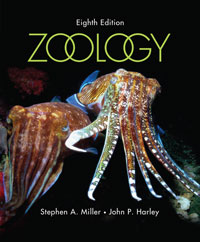1.
A) 50 million B) 100 million C) 550 million D) 1.5 billion 2.
A) colonial B) syncytial C) membrane D) Precambrian 3.
A) Burgess Shale B) Ediacara formation C) Tommotian formation D) Gemmule formation 4.
A) asymmetrical B) three cell types C) central cavity, or a series of branching chambers, through which water circulates during filter feeding. D) diploblastic tissue organization 5.
A) pinacocytes B) choanocytes C) porocytes D) mesenchyme cells 6.
A) pinacocytes B) choanocytes C) porocytes D) ameboid/mesenchymal cells 7.
A) pinacocytes B) choanocytes C) porocytes D) mesenchyme cells 8.
A) line radial canals that branch off the spongocoel. B) line the spongocoel directly. C) are found in flagellated chambers. D) line incurrent canals. 9.
A) highly folded. B) thick and perforated by a highly branched canal system. C) unfolded and not perforated by a branched canal system. D) a single cell layer thick. 10.
A) sycon. B) leucon. C) ascon. D) mycon. 11.
A) Ctenophora B) Cnidaria C) Porifera D) Nematoda 12.
A) radial or biradial symmetry B) nervous system in the form of a nerve net C) choanocytes used in defense, feeding, and attachment D) gelatinous mesoglea located between epidermal and gastrodermal tissue layers 13.
A) the polyp stage is always predominant. B) the medusa stage is always predominant. C) the medusa and polyp are both usually present. D) nematocysts are absent. 14.
A) anemones. B) corals. C) Hydra. D) jellyfish. 15.
A) Hydrozoa B) Scyphozoa C) Anthozoa D) Cubozoa 16.
A) medusa. B) planula. C) polyp. D) ephyra. 17.
A) Hydrozoa. B) Scyphozoa. C) Anthozoa. D) Calcarea. 18.
A) Hydrozoa B) Staurozoa C) Scyphozoa D) Cubozoa 19.
A) True B) False 20.
A) True B) False 21.
A) True B) False 22.
A) True B) False 23.
A) True B) False 24.
A) True B) False 25.
A) True B) False 26.
A) True B) False 27.
A) True B) False 28.
A) True B) False 29.
A) True B) False 30.
A) True B) False





